 |
|
| Issue #120 • November/December, 2009 |
If you think milk and beef are expensive in the grocery store, then you should think about raising a baby calf or two. Because corn and milk replacer are expensive as well, the price of baby calves to raise on a bottle are quite reasonable today. In fact, when we decided to raise a few calves this year, I was shocked at just how cheap they really are. We are raising calves for beef, and our first baby only cost $55. Back 20 some years ago, when I raised a lot of baby calves, I often paid as much as $150 for the same type of Holstein bull calf.
Adult cattle, whether it is a milk cow or beef steer, cost a whole lot more, from $500 to $800 and up, so raising your own calf is a gradual, cheaper alternative. I’ve found that a calf bought in the fall requires little hay that first winter and then in the spring it can graze on free pasture. By late fall, you could butcher that young steer to avoid feeding hay over winter, giving you very tender baby beef. Of course, by wintering that steer again and pasturing him in the summer, you’ll gain a lot of meat. And that meat will taste more “beefy” than a younger animal. A baby beef steer will usually weigh from between 600 to 800 pounds, depending on the feed given and the breed of the animal, where a finished two-year-old will usually weigh in between 850 and 1,200 pounds, again depending on feed and the breed.
A baby heifer will not be ready to breed until she is two years old, so you will be keeping her on, regardless. (Some people breed a heifer to calve as an older two-year-old, but I prefer to wait as it builds a stronger body that will give you a milk cow that will last for years with good care.)
By raising your own milk cow, you can teach the baby heifer to lead, be handled, tie out on a picket chain, if necessary, and she’ll be perfectly at ease with you working around her. When you buy an older milk cow, she may or may not lead, may be spooky when handled, and may refuse to be tied in order to graze, as she probably came from a dairy where she only knew how to come into the barn, go to her stanchion, and be machine-milked.
Breeds to consider
When you decide to buy a calf, consider what you are going to do with it. If it is going to be a family milk cow, a good choice would be a Jersey, Guernsey, or Milking Shorthorn. These are all smaller breeds, known for their docile temperaments. They will not give as much milk as most Holsteins, but a family does not need 10 gallons of milk a day for homestead use.
Jersey:
The Jersey cow is a small tan or brown (sometimes dark) cow. She has large, expressive eyes, a short dished face, and often looks “thin on top.” She often has black around her muzzle and eyes. I really love Jerseys as they usually have a wonderful disposition and give plenty of rich milk.
When you are going to save your cream to make butter and ice cream, you want milk with a high butterfat content, which the Jersey gives. This makes lots of thick cream that is easily skimmed off, leaving skim milk that tastes as rich as “regular” store milk.
Some folks swear by the beef from a Jersey steer, saying the meat is richer and more tender than any other beef. Usually, you can buy a Jersey bull calf quite inexpensivelyoften half the price of another breed. The drawback to raising a Jersey steer for meat is that because the Jersey is a small breed, the young steer does take longer to reach a size that makes for economical butchering. While the steer will fill out nicely, it will not be as blocky as, say, a Milking Shorthorn steer, when finished.
Guernsey:
|
The Guernsey is another smaller dairy cow that is a bit larger than the Jersey. She is usually light reddish-brown and white spotted. She is taller and longer than the Jersey, yet smaller than the large Holstein or Brown Swiss. I’ve had several Guernseys and they are very nice cows with a sweet temperament.
Because the Guernsey is a larger dairy breed, the steers do reach a finished butchering weight and size earlier than a Jersey, and the calves are usually quite cheap to buy. But, again, as it is a smaller breed it will not finish out as blocky or as fast as one of the dual-purpose breeds or the Holstein.
Milking Shorthorn:
Less common than either the Jersey or Guernsey, the Milking Shorthorn is still a wonderful family cow. I love them and when I used to have a small milking herd, I had several, along with a Milking Shorthorn bull. The reason I used this bull was that the bull calves were very stocky, and always topped the sale as yearlings. The heifers could either be used as replacements in my own herd or sold to others. The Milking Shorthorn is usually liver colored with some white, ranging from spots to a little roan on the tail or a white star on the forehead. The Milking Shorthorn cow is blocky and doesn’t look “skinny” like the Jersey and Guernsey (both strictly dairy breeds); she is a dual-purpose breed, being used for both beef and milk.
A Milking Shorthorn bull calf will finish out quite rapidly to a blocky, finished butchering size, and the yield of meat will be quite high, as compared to dairy breed bull calves. But expect to pay a higher price for a Milking Shorthorn bull calf than you would for a dairy breed.
Holstein:
The Holstein is the most common dairy cow in this country. She is black and white spotted and stands tall. She might not give as much cream as the other, smaller cows do, but she makes up with it in sheer volume of milk. There are Holsteins which produce a hundred pounds of milk a day! If you have a large family or plan on using lots of milk to make cheese or feed bottle calves or pigs, the Holstein may be the breed for you.
While not a dual-purpose breed like the Milking Shorthorn, Holstein bull calves are large boned and grow quickly to an economical butchering size. The steers fill out quite nicely, although not as blocky as the Milking Shorthorn. Because the Holstein is such a common breed, it is easy to find bottle calves available at quite reasonable prices.
Just about any breed, including crosses between breeds (even dairy/beef) can be used for either a family milk cow or a beef animal. Other common breeds include the Ayrshire, a larger red and white spotted cow, and the Brown Swiss, a larger brown/silver dairy cow.
Calf housing
Calves are quite easy to house. Any dry shed or barn stall, protected from the weather and cold, is fine. Allow plenty of natural cross-ventilation, without drafts, and a fenced lot or pasture for exercise on sunny days. One calf can be happily raised in a 10×10-foot stall or shed, along with a pen or pasture, from birth to adulthood.
Dampness is an enemy to calves, so be sure that the shed or stall has a dry floor with plenty of frequently-changed bedding. Don’t choose a shelter where heavy rains will drain into the floor. Instead, dump a few wheelbarrows full of sand inside to raise the floor, preventing dampness.
While calves can be fenced in with an electric fence, you’ll be much happier using either heavy gauge welded stock panels (about 50 inches high and 16 feet long) fastened to steel T posts, woven wire (also called field fence), rail fence, or even several tight strands of barbed wire. If at all possible, fence in enough land to let your calf range on pasture. Not only will it quickly begin eating grass, but it will be much healthier as its rumen (main stomach) will begin to kick in sooner and lessen the chances of it picking up calf scours (a severe and sometimes fatal case of diarrhea).
Before you buy a calf
Before you bring a calf home, make sure your facilities are ready, and decide how you will feed it as a baby calf. I’ve found that as calves naturally nurse with their head upright, it pays big dividends to use a nursing bottle instead of a pail or nursing pail. Nursing bottles are large, two-quart plastic bottles with a slip-on rubber nipple or one that has a plastic screw-on ring to hold the rubber nipple in place. There is a tiny air vent hole on the flat part of the nipple, and I always run the tip of a small pocket knife through it because it never lets enough air into the bottle to prevent the nipple from collapsing while the calf is nursing.
If he or she doesn’t get enough milk, the calf will butt and root around, often banging into you in the process. Of course, you don’t want to overdo it either by cutting the hole too large or enlarging the X where the milk comes out, or your calf will get too much milk and get diarrhea.
|
The type of milk you feed can vary. Of course, mother’s milk is best, but when you buy a baby calf, you usually have to substitute with a replacement. There are powdered calf milk replacers available at most feed stores. You will be mixing this with very warm water until the powder is dissolved. The milk should be warm to the touch, but not hot. There are cheaper milk replacers available, but I do not recommend them. For the few dollars you save, you risk scours because of the milk’s indigestibility and slower complete mixing. Usually, you can raise a baby calf on only one bag of milk replacer until they are weaned, so the price difference is not worth the risk.
When available, the next best milk to mother’s milk is goat’s milk. I’ve fed hundreds of baby calves on goat milk with great success. Because it is so digestible, you will have fewer cases of scours and the calves grow very fast.
If the weather is very cold you should also have a heat lamp available for the calf to lie under. But it’s best not to buy a calf in cold weather, as it is simply added stress to the poor little thing, who’s under a lot of stress already. And heat lamps have caused a lot of barn fires when they have been knocked down into the straw by a rambunctious animal.
Have your facilities, calf milk, and bottle ready when the new baby comes home for a quick transition. I also have on hand a few packets of calf electrolytes in case the baby begins to develop scours (diarrhea). Calves quickly become dehydrated if the diarrhea continues, and the electrolytes can save a life. You can buy these at your local farm/ranch store or from your veterinarian.
Buying your calf
The very best place to buy a calf is from the farm it was born on. You will know that it has not been hauled in a truck or trailer, frightened, subjected to bad weather, and that it has received at least a couple of days’ colostrum (first milk) from its mother. Colostrum is the thick first milk the cow gives after giving birth. It is full of antibodies and nutrition that are necessary to give the baby a good start in life. Without it, calves often never do well, no matter what care you give later on. You can often talk to local feed mills to find out who might have baby calves to sell and then do some calling around. Or post an advertisement there stating that a baby calf is wanted. Sometimes you can find calves listed on the internet, on the Craigslist of your nearest city. For instance, we use the Duluth Craigslist, clicking on “farm and garden.” Farmers often list baby calves for sale there. (www.craigslist.com)
I’ve bought many calves from livestock auctions. These calves are cheaper, usually, than ones bought from the farm, but there is a risk. You never know how much stress the calf has been exposed to, whether or not it received adequate (or any) colostrum, or if it has health issues. But you will have several to choose from and can often do well if you are careful.
Never buy a calf that seems slow, tired, or weak. Chances are that it is sick and you may lose it. Look closely at the navel area. Don’t buy a calf that has a red, newborn-type umbilical cord; it’s too young to do well. Also watch the navel for any swelling or “bunch.” This probably is a navel infection (which may or may not clear up with a course of antibiotic injections) or may be an umbilical hernia that could later strangulate (where the muscle pinches off a section of bowel) and kill the calf.
Look closely at the calf’s tail and rump. It should be clean. Don’t buy a calf with a wet or dirty tail, matted with manure. Chances are that the calf already is suffering from scours. You might be able to save it, but unless you have plenty of experience (and a lot of luck), it may die.
Also look for a whitish, thick discharge from the calf’s nostrils. This is “the snots,” and is often caused from the same bacteria that causes scours. This is commonly called “shipping fever,” is contagious to other calves, and can cause death, even when treated. Buy a healthy calf, instead.
The trouble with livestock auctions is that you only have a few minutes to examine each calf as it sells in the ring. This is daunting to beginners. If at all possible, take an experienced person with you when you go buying. Get there early and look through the pens of calves to spend some time checking them out before they are in the ring. Pick out a few “possibilities” before the auction begins so you don’t panic when the actual bidding starts.
At most livestock auctions, they’ll run in both single animals and whole pens full of calves. You don’t want to end up buying five calves when you only want one! So when a calf comes in that you want, quickly ask the ring man or auctioneer if you can bid on “choice.” They are usually happy to oblige, knowing that a buyer of a single calf will usually pay a little more than if someone bought the whole pen. That way, even if you have to pay a little more, you can have a wider choice of animals.
Bringing your calf home
I’ve brought calves home in a stock trailer, in a camper shell on my truck, in a small utility trailer, and even in the back seat of my old car. The main thing is to have the calf well bedded and out of the weather for the trip home. You don’t want it to become wet from rain or snow and get chilled; it’s already had enough stress in its young life.
If you bought the calf from a farm, ask the owner when it last was fed, how much it is fed, and what it is drinking (milk replacer, colostrum, cow milk). Duplicate it at home, as much as possible. If you have to switch feed, say from cow milk to milk replacer, cut the first feeding in half. If it was getting two quarts of milk per feeding, only give one quart of milk replacer the first feeding. It’ll be hungry, but that won’t kill it. It will help the calf’s digestive tract adjust to the new feed much easier.
While most powdered calf milk replacers advise feeding a medium or large-breed calf two quarts of mixed milk at a feeding, I only give a new calf one quart to start with, giving feedings three times a day for three days. This gives them a chance to get over stress and adjust to their new feed and surroundings without upsets. No, they will not starve, even though they may act like it. Then, if they seem to be doing fine (no diarrhea, no snotty nose), increase the milk to two quarts a feeding, twice a day. They should still seem very hungry after they are done. Don’t cave in and give them all they want; you are inviting indigestion and scours that may kill them.
Continuing feeding
After the calf is about two weeks old, following a bottle feeding, dip up some mixed sweet calf grain with your hand and let the calf suck the feed off your fingers. In that way your calf will soon learn to like and eat grain. The sooner you can get the rumen working on solid foods, the better your chances are that the calf will live and do well. Keep fresh hay available to the calf at all times, and either cut green grass and clover twice a day to offer, or let the calf graze if it wants to. Even two- or three-week-old calves will start nibbling on solid feed if it is available. Also keep fresh water where the calf can get to it at all times. Drinking water will help keep the baby from dehydrating.
|
Trouble, and what to do
The two most common health problems a baby calf experiences are calf scours and shipping fever/pneumonia complex. Usually, younger calves will scour from stress, indigestion, and bacterial infection. The stool of a normal, milk-fed baby calf is first a yellowish paste, then a darker brownish/green/black more solid “plop.” Keep a very careful eye on what is on the ground in the calf stall or yard. Watch for telltale loose bowels. A slight loosening is okay, but if it gets worse, really watch. Under no circumstances does a healthy calf “squirt” out a stool.
If it does, immediately take action. First, completely eliminate milk feedings for two days, replacing them with oral calf electrolytes mixed with warm water. It’s also a good idea to begin antibiotics, either by intramuscular injection or orally as a calf scour bolus (large pill). Both are available from your veterinarian or a well-supplied ranch store. The advantage of getting your medicines from your veterinarian is that you can also learn from his experience and advice. Oral calf boluses usually not only contain antibiotics but an antidiarrheal, such as kaolin-pectin.
I often use an intramuscular antibiotic and dose the calf with liquid kaolin-pectin. Don’t mix it with the electrolytes, but give it prior to or well after feeding, so as not to dilute it. The kaolin-pectin soothes the digestive tract and helps reduce the diarrhea. Without it, the diarrhea sometimes cannot be stopped, and the calf finally dies.
If, with treatment for two days, the calf does not improve or worsens, it may need IV fluids, given by your veterinarian.
The other common calf ailment is shipping fever/pneumonia complex. This is often caused by a combination of stress (i.e. “shipping”) and a systemic bacterial infection. The first sign usually is a reduced appetite. (Calves should always act half-starved.) If the calf doesn’t eat very vigorously, that’s a red flag. One feeding like that may not mean much, especially if the calf is eating grass and grain. But after two feedings, if the calf still only half-heartedly sucks its bottle, take its temperature.
This is done with a thermometer, rectally. A normal calf’s temperature is 101-102 degrees, or a little higher on a hot summer day. Much higher than that, coupled with the lack of appetite, and you can guess you have a sick calf. Be careful taking the temperature; hold on to the thermometer, as it can sometimes get pulled up into the rectum, and you don’t want that to happen.
Other signs of shipping fever/pneumonia are a thick white “snotty” nose, and perhaps coughing as well as lethargy. The calf doesn’t get up and walk around as usual. It doesn’t play or investigate things.
Treatment is often best done with intramuscular antibiotics. Tell your vet you suspect your calf has shipping fever and let him/her tell you what they recommend. I’ve had pretty consistent luck with penicillin. I inject it into a large muscle, often in the calf’s rump, being careful not to hit a bone in the process. Often as little as a day or two of medicine brings remarkable improvement, but don’t stop giving the antibiotics until the full treatment course has been finished or the calf may relapse and the antibiotic will not work again. Better safe than sorry.
In addition to antibiotics, keep the calf warm and dry, tempting it with especially “nice” feed such as fresh hay, green grass, and clover. Hopefully, soon it will be bouncing around as good as new.
Weaning the calf
You will be bottle feeding the calf, two quarts a day, for about six weeks. During this time, offer clean hay, pasture or cut grass and clover, fresh calf grain twice a day, and plenty of clean water. At first, the calf will only nibble on the grass, hay, and grain. But after a few weeks, it will eat in earnest. Feed all the hay and pasture it wants, and up to ¾ of a pound of good calf starter daily, fed twice a day. After the calf is weaned, it can be fed a pound and a half from 3-6 months, slightly more if it needs more weight and finish. Do not over-feed grain or indigestion (diarrhea and bloat) may result.
I wean the calf by cutting his bottle feeding down to once a day, after he is eating ¾ of a pound of calf starter grain a day, usually at about six to seven weeks of age. Then, after a week, I stop the bottle completely. Sure, the calf wants the bottle, but it will soon forget it and act like a big cow.
Training to lead and tie
Regardless of what your plans for the calf are, all calves are much nicer if they are taught from an early age to lead and tie. I start with a calf halter and lead rope when the calf is about three weeks of age. I start gradually, leading the calf about in the outdoor pen. Then after a few days, it will generally lead quite well. You can imagine that it’s so much easier to teach a hundred pound calf to lead instead of playing rodeo with a 1,000 pound cow. Even a beef steer is a better animal if it will lead. What if it gets out and you have to get it back home again? Call it to a pan of feed, snap a lead rope onto his halter and lead him home. Have you ever chased a reluctant bovine? Good luck.
Once the calf will lead well, tie him securely to a wall, tree, or sturdy wood fence post. Tie the rope fairly short so it doesn’t get tangled up. Don’t use a hard, fast knot, but a safety knot that you can pull loose in case of emergencies.
Milk cows are so much nicer if they will lead and tie with no fuss. In the old “Little House On The Prairie” days, most family cows were picketed on a rope or chain, as the pioneers didn’t have fences to keep the cow home. Some of us modern day homesteaders have done this too, for the same reason. When we moved to Montana, we had our bottle-raised cow and her new calf, but no fences yet. So, as Rosie was lead broken, and would tie well, I just snapped a sturdy chain onto a steel picket pin with a swivel and moved her to a new, lush spot of pasture every morning. Simple as pie. And once your heifer calf will lead and tie calmly, you can tie her to milk anywhere. Fastening her in a milking stanchion is even easier. So take the time and teach that baby calf to lead and tie.
|
Handling your calf
Like teaching a calf to lead and tie, it’s a good idea to teach the calf to enjoy being handled by people. Even a steer calf should be petted and brushed so that it doesn’t become wild. He isn’t a pet, but a future meat animal. But he will be easier to work around if he isn’t a frightened beast. Such an animal can hurt you or someone else.
A future milk cow should be handled frequently as she grows up. By stroking her sides, belly, udder, and hind legs, she’ll soon grow used to human touch and simply ignore or even enjoy the handling. Brush her and wipe on fly repellent. When she comes into milk, she will be easy to teach to stand for milking. Who wants to milk a wild rodeo cow? I sure don’t enjoy feet in the bucket or my face.
Dehorning and castration
I believe all family calves should be dehorned. I do this at an early age before the horns have even started to grow by using an electric dehorning iron. This burns a ring around the base of the horn bud, killing it before the horn grows out. It only takes a few seconds for each side, with the calf securely tied short. But once the horns have come out of the hair, you must have them cut off. If it is done at an early age, there is a “horn scoop” that quickly snips the small horns off, one at a time, with little bleeding. Each horn is then sprinkled with blood stopping powder and the calf is released. If you don’t have a knowledgeable friend or neighbor, have your veterinarian come out to dehorn your calf. It is a relatively inexpensive process and may save you from a serious injury later on.
Like dehorning, castrating your bull calves is very necessary. No, the meat doesn’t taste better. But a young bull can and usually does get rambunctious to the point of becoming dangerous to the family. And castration at a young age is very easy. For the homesteader, perhaps the easiest and cheapest method of castrating a calf is using an elastrator. This tool slips a heavy rubber band over the scrotum and it is released. It shuts off the circulation to the part and it will slowly die and fall away. I prefer to use an emasculatome (a Burdizzo), which is used to crush the cords to the testicles, one at a time. It is quick, quite pain-free and there is no bleeding or chance of infection. Unfortunately, an emasculatome is quite expensive, more than $100. It’s important not to apply the jaws across the entire scrotum. There is a dividing membrane between the testicles, and the emasculatome is held away from that, crushing only one side at a time, well above the testicle itself. Of course, you can use the tried and true method of castration using a knife. The bottom skin of each side of the scrotum is cut, the testicle pulled down, and the cord stretched and cut off with a scraping cut instead of a simple straight cut. This eliminates or reduces bleeding. It’s best to watch an experienced person do this a few times before trying it yourself to avoid mistakes. I suggest having your veterinarian come out for castration to avoid trauma to the calf and yourself.
With a little work, and a relatively small investment in purchase and feed, you can work your way up to a freezer-full of prime beef or a sweet milk cow that you couldn’t afford otherwise. In fact, we are raising four bull calves right now. Two will eventually be used for our own meat; one as baby beef in a year, and the other as a mature steer in two years. We’ll sell the other two. The money we earn from those two will more than pay for the purchase price of all four, plus the feed we have used. That gives us two beef animals for “free.” Not a bad deal. Now I’ve got my eyes open for a pretty little heifer calf to go along with them for a future milk cow. I can’t wait!


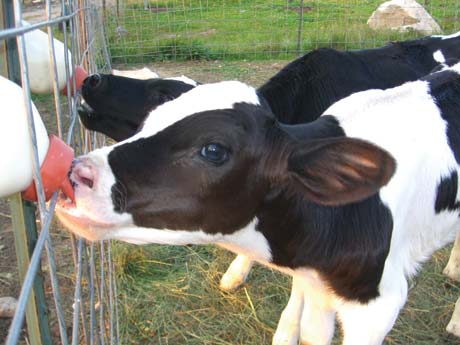




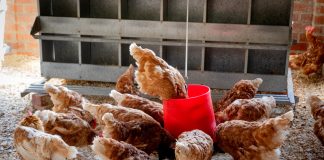






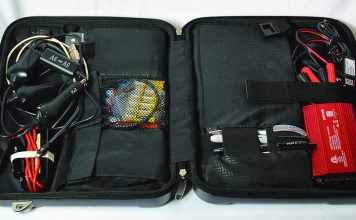

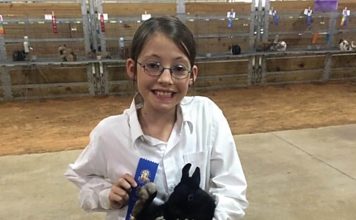
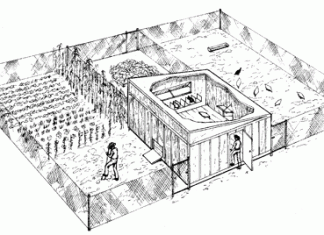
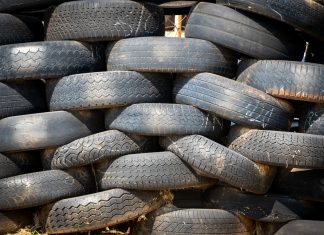
How much are you saleing the valve for ?
Awesome article. I have raised many calves, and have still learned a lot of new information from this article. This is a definitive work for anyone starting out raising calves.